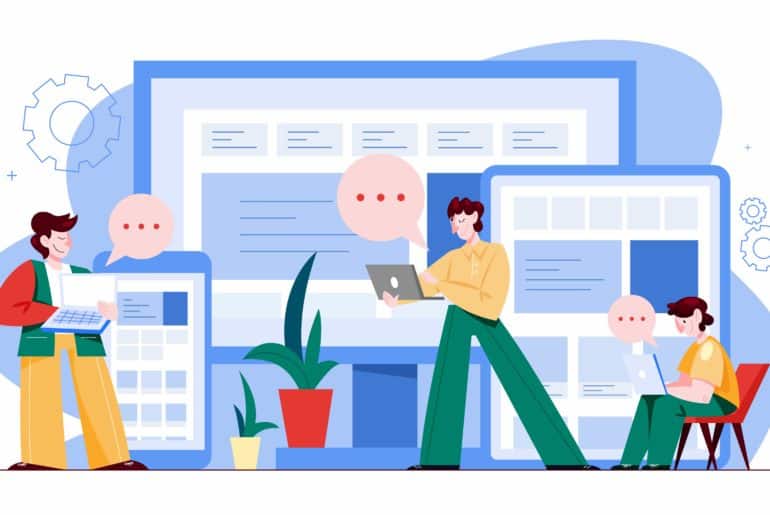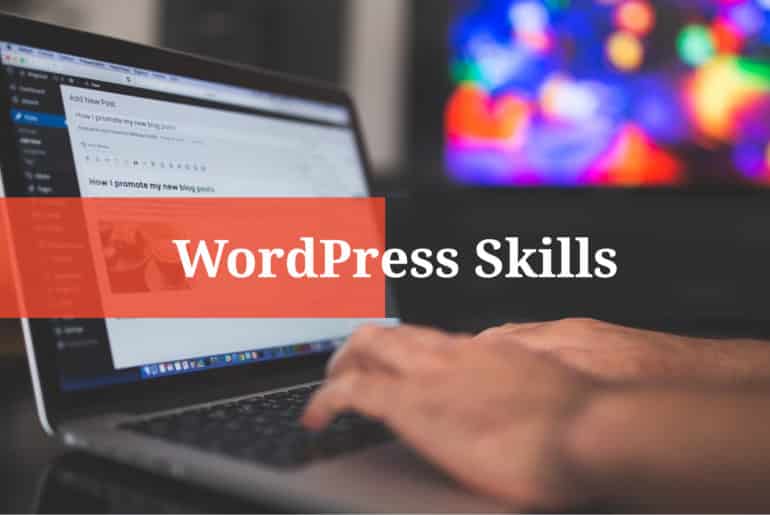Headless WordPress is new and a popular way of developing web apps known as client-side development. As the name suggests, the app’s interface is created and managed from the client side, usually a browser and not on the server. It helps to build web apps that combine WordPress content management with the power and flexibility of JavaScript front-end interfaces. In WordPress, Plugin provides a framework set up as a headless CMS.
We all know content is king on the internet today. The creation and distribution of unique content can generate an iconic digital experience. Therefore, it is crucial for every business to manage and deliver quality content in order to remain competitive. Nowadays, a new type of Content Management System is on the rise.
A headless content system can open up new opportunities and abilities for your organization and the way you share your content with the world. In today’s era, the modern CMS revolution is driving up demand for more flexible, scalable, and a customizable system that delivers the experience you want and your customers expect. You can easily separate front and back ends, with either a headless or decoupled implementation enables organizations to increase delivery times while iterating faster.
Headless CMS is an unstoppable system. We’re going to take a closer look at what headless CMS WordPress is, why you need a headless content management system, and which one is right for you.
Also Read: WordPress Stuck In Maintenance Mode: How To Fix It?
Table of content
What is a Headless CMS?
Headless CMS is a new way of developing a client side app. As the name indicates there is a lack of a frontend in Headless CMS. Headless CMS includes API and backend system at which the content is stored and distributed.
A headless CMS differs from its traditional counterparts as it has no default front-end system. It publishes your content anywhere and on any framework .It makes it easy for you to implement on any channel marketing. It’s very easy to create and manage website content with headless CMS. It also allows for interaction with its content via an API.
Headless CMS uses API which helps to execute the content into a webpage. API helps in publishing the content to a web service to any device like on desktop or mobile. It basically fulfills the lack of frontend. Maintenance of headless CMS is easier than non-headless CMS.
Headless CMS leads to the improvement of workflow and collaboration, with digital asset management and access controls. A headless CMS has a Better content management which makes it easier for you to focus on content and workflow and manage exactly how that content can be used.
A headless CMS has the ability to integrate with any website or application. Editors, marketing people, and other users can edit content independently of the web application. Developers can pull and use only the content they need.
Why do you need an alternative CMS to WordPress?
WordPress is a great CMS which is used for managing blogs or simple websites. Alternative CMS is popular and user-friendly. Take a closer look on Alternative CMS. Below we share reasons why you need an alternative CMS to WordPress.
#1. SECURITY ISSUES

The most serious weakness in WordPress is security. Plugins in WordPress lead to security issues as they can be made by anyone who poses a risk in terms of quality and safety. They have multiple plugins which slow down the site performance and may disrupt the code.
#2. FREQUENT MAINTENANCE

Maintaining a fresh and healthy CMS is important for effective use and for delivering fast performing digital experiences for your visitors and customers. It is important for effective use of your time
Plugins need to be updated regularly, as the codes often include weaknesses and bugs, which malicious forces know to take advantage.
#3. LOW FLEXIBILITY FOR DEVELOPERS
WordPress is chiefly meant for non-technical people. It is so great and popular for regular folks, local businesses, and small organizations. But it lacks in terms of flexibility for back-end developers. Moreover, developers don’t code in the WordPress platform.
#4. LOW FLEXIBILITY FOR CONTENT AUTHORING
WordPress is a great match for fitting themes and plugins that fulfill your purposes, but if there isn’t a perfectly fitting theme and group of plugins, you have to pull up your sleeves and code. Alternative CMS is mainly used for blogging. Therefore with the blogging platform you also get an enormous eco system in CMS.
#5. SCALABILITY ISSUES
Scalability is the ability of a system to grow while maintaining smooth performance and sensible operations. In terms of scalability, WordPress supports multi-site, although through a complicated process for developers. However, WordPress is built around a relational database which means that you need a separate search engine to do site search, product search, facet search, and so on, which scale poorly.
#6. LACK OF CONTROL

As we all know that WordPress is an open source which means you can see what is developed, what is planned, and the documentation of every feature and function of the platform. Hierarchy builds up a lack of control which inherits the presentation of your site. Create a separate menu in a location in the CMS.
WordPress works perfectly for private persons or small organizations as it has a blogging tool. You need additional themes and plugins, and you need a partner that’s an expert in WordPress to ensure you’re not the next scamming site in line. Creating, managing, and distributing quality content is an essential part of any business that wishes to stay competitive online.
By using the right headless CMS that suits your business needs, you can easily deliver an iconic digital experience to your customers.
What Platform is Right for You?
Once you’ve decided that a headless CMS platform is right for you, how do you go about deciding which one to implement?
#1. Cosmic JS
Cosmic JS is used for building content powered apps in any programming language. It is powerful CMS and scalable for all size teams. It also offers cloud-based and enterprise CMS. It is easy to manage multilingual content in as many languages as you need in Cosmic JS.
#2. Contentful

Contentful is an API-driven headless CMS that focuses on content and backend. You can manage, integrate and deliver content across all digital devices and channels, using the preferred languages and frameworks. It is considered as one of the best systems for small to medium enterprises.
#3. Prismic
Prismic is the most popular API-based Headless CMS for your websites and applications. Prismic is a headless CMS trusted by many enterprises such as Google, Netflix and more. It helps to choose the technology, framework, and language and thereafter easily manage and deliver the content. It supports eCommerce platforms like Magento and Shopify.
#4. Directus
Directus is best headless CMS for projects that entail customized databases. Directus proposes a simple and automatic interface for which no training is required. You can store all system data separately using Directus The content can be edited anywhere by any smart device. The open-source software is free without any limitations or licenses.
That’s it! Read out the article and know why you need a headless content management system, and which one is right for you. Hope you liked it.
Interesting Reads:
Complete WordPress Security Tool
WordPress Plugins to Sell Digital Downloads
Top WordPress Payment Gateway Plugins For Easy Digital Downloads






